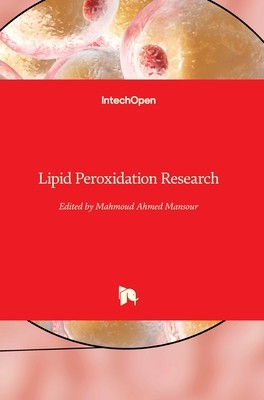
- We will send in 10–14 business days.
- Publisher: IntechOpen
- ISBN-10: 1839685476
- ISBN-13: 9781839685477
- Format: 17 x 24.4 x 1 cm, hardcover
- Language: English
- SAVE -10% with code: EXTRA
Lipid Peroxidation Research (e-book) (used book) | bookbook.eu
Reviews
Description
Lipid peroxidation is the major molecular mechanism that induces oxidative damage to cell structures and is also involved in the toxicity process that leads to cell death.Lipid peroxidation is a chain reaction initiated by the hydrogen abstraction or addition of an oxygen radical, resulting in the oxidative damage of polyunsaturated fatty acids (PUFA). PUFAs are more sensitive than saturated fatty acids because of the presence of a double bond adjacent to a methylene group that makes the methylene C-H bond weaker and therefore the hydrogen is more susceptible to abstraction. This leaves an unpaired electron on the carbon, forming a carbon-centered radical, which is stabilized by a molecular rearrangement of the double bonds to form a conjugated diene, which then combines with oxygen to form a peroxy-radical.In pathological situations the reactive oxygen and nitrogen species are generated at higher than normal rates, and as a consequence, lipid peroxidation occurs with deficiency of endogenous antioxidants as alpha-tocopherol deficiency or reduced glutathione. In addition to containing high concentrations of PUFAs and transition metals, biological membranes of cells and organelles are constantly being subjected to various types of damage.This book presents systematic and comprehensive reviews on free radicals and their involvement in lipid peroxidation with special emphasis on their important role in different diseases.
EXTRA 10 % discount with code: EXTRA
The promotion ends in 15d.14:20:02
The discount code is valid when purchasing from 10 €. Discounts do not stack.
- Publisher: IntechOpen
- ISBN-10: 1839685476
- ISBN-13: 9781839685477
- Format: 17 x 24.4 x 1 cm, hardcover
- Language: English English
Lipid peroxidation is the major molecular mechanism that induces oxidative damage to cell structures and is also involved in the toxicity process that leads to cell death.Lipid peroxidation is a chain reaction initiated by the hydrogen abstraction or addition of an oxygen radical, resulting in the oxidative damage of polyunsaturated fatty acids (PUFA). PUFAs are more sensitive than saturated fatty acids because of the presence of a double bond adjacent to a methylene group that makes the methylene C-H bond weaker and therefore the hydrogen is more susceptible to abstraction. This leaves an unpaired electron on the carbon, forming a carbon-centered radical, which is stabilized by a molecular rearrangement of the double bonds to form a conjugated diene, which then combines with oxygen to form a peroxy-radical.In pathological situations the reactive oxygen and nitrogen species are generated at higher than normal rates, and as a consequence, lipid peroxidation occurs with deficiency of endogenous antioxidants as alpha-tocopherol deficiency or reduced glutathione. In addition to containing high concentrations of PUFAs and transition metals, biological membranes of cells and organelles are constantly being subjected to various types of damage.This book presents systematic and comprehensive reviews on free radicals and their involvement in lipid peroxidation with special emphasis on their important role in different diseases.


Reviews